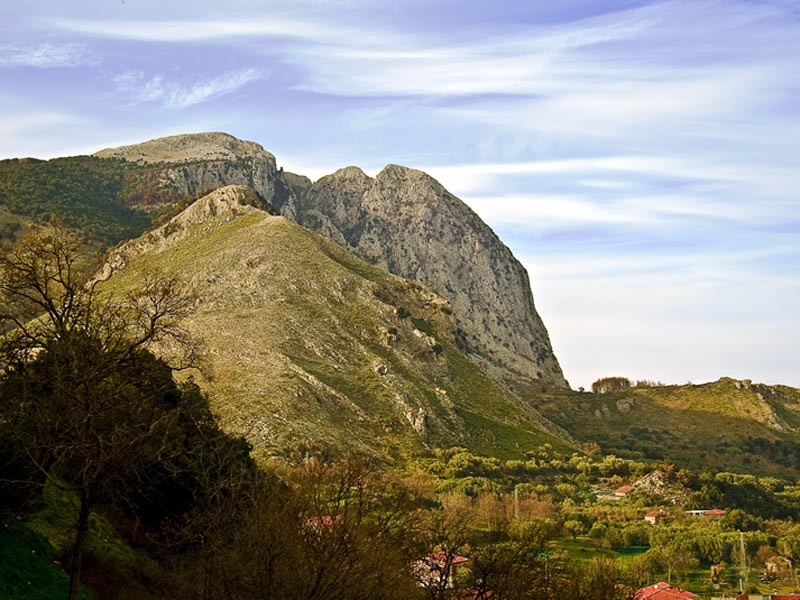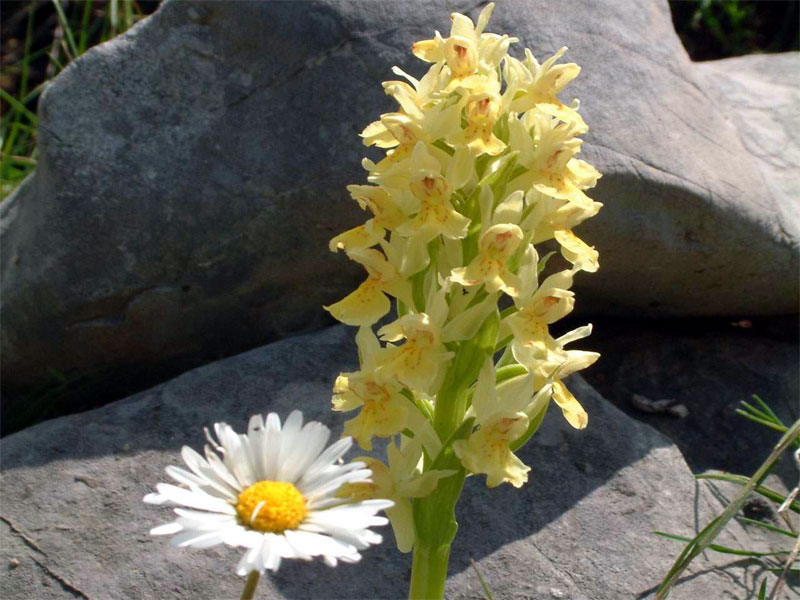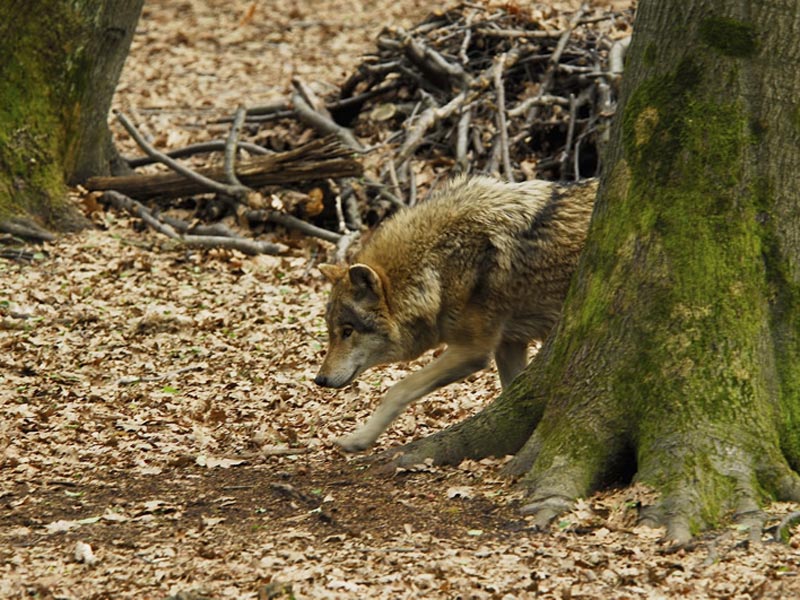Parco Nazionale del Cilento, Vallo di Diano e Alburni
www.cilentoediano.itProtected Area
Identity Card
- Cilento, Vallo di Diano e Alburni National Park:
- Land Surface Area: 181'048.00 ha
- Protected flora: 1 species (Italian text)
- Protected wildlife: 67 species (Italian text)
- Habitats: 14 types (Italian text)
- Regions: Campania
- Provinces: Salerno
- Municipalities: Agropoli, Aquara, Ascea, Auletta, Bellosguardo, Buonabitacolo, Camerota, Campora, Cannalonga, Capaccio, Casal Velino, Casalbuono, Casaletto Spartano, Caselle in Pittari, Castel San Lorenzo, Castelcivita, Castellabate, Castelnuovo Cilento, Celle di Bulgheria, Centola, Ceraso, Cicerale, Controne, Corleto Monforte, Cuccaro Vetere, Felitto, Futani, Gioi, Giungano, Laureana Cilento, Laurino, Laurito, Lustra, Magliano Vetere, Moio della Civitella, Montano Antilia, Monte San Giacomo, Montecorice, Monteforte Cilento, Montesano sulla Marcellana, Morigerati, Novi Velia, Omignano, Orria, Ottati, Perdifumo, Perito, Petina, Piaggine, Pisciotta, Polla, Pollica, Postiglione, Roccadaspide, Roccagloriosa, Rofrano, Roscigno, Sacco, Salento, San Giovanni a Piro, San Mauro Cilento, San Mauro La Bruca, San Pietro al Tanagro, San Rufo, Sant'Angelo a Fasanella, Sant'Arsenio, Santa Marina, Sanza, Sassano, Serramezzana, Sessa Cilento, Sicignano degli Alburni, Stella Cilento, Stio, Teggiano, Torre Orsaia, Tortorella, Trentinara, Valle dell'Angelo, Vallo della Lucania
- Establishment Measures: L 394 06/12/1991 - DM 4/12/92 - DM 05/08/93 - DPR 05/06/95
- PA Official List: EUAP0003
- Park Authority: Ente Parco Nazionale del Cilento, Vallo di Diano e Alburni
- Further managed Protected Areas:
- Area Marina Protetta Costa degli Infreschi e della Masseta
- Area Marina Protetta Santa Maria di Castellabate
- SIC Alta Valle del Fiume Calore Lucano (Salernitano)
- SIC Balze di Teggiano
- SIC Basso corso del Fiume Bussento
- SIC Fascia interna di Costa degli Infreschi e della Masseta
- Sito d'Interesse Comunitario Alta Valle del Fiume Bussento
- Sito d'Interesse Comunitario Fiume Alento
- Sito d'Interesse Comunitario Fiume Mingardo
- Sito d'Interesse Comunitario Grotta di Morigerati
- Sito d'Interesse Comunitario Isola di Licosa
- Sito d'Interesse Comunitario Lago Cessuta e dintorni
- Sito d'Interesse Comunitario Montagne di Casalbuono
- Sito d'Interesse Comunitario Monte Bulgheria
- Sito d'Interesse Comunitario Monte Cervati, Centaurino e Montagne di Laurino
- Sito d'Interesse Comunitario Monte della Stella
- Sito d'Interesse Comunitario Monte Licosa e dintorni
- Sito d'Interesse Comunitario Monte Motola
- Sito d'Interesse Comunitario Monte Sacro e dintorni
- Sito d'Interesse Comunitario Monte Soprano e Monte Vesole
- Sito d'Interesse Comunitario Monte Sottano
- Sito d'Interesse Comunitario Monte Tresino e dintorni
- Sito d'Interesse Comunitario Monti Alburni
- Sito d'Interesse Comunitario Pareti rocciose di Cala del Cefalo
- Sito d'Interesse Comunitario Rupi costiere della Costa degli Infreschi e della Masseta
- Sito d'Interesse Comunitario Scoglio del Mingardo e spiaggia di Cala del Cefalo
- Sito d'Interesse Comunitario Stazione a Genista cilentana di Ascea
- Sito d'Interesse Pineta di Sant'Iconio
- Zona Speciale di Conservazione Monti della Maddalena
- Sito d'Interesse Comunitario e Zona di Protezione Speciale Capo Palinuro
- Sito d'Interesse Comunitario e Zona di Protezione Speciale Parco marino di Punta degli Infreschi
- Sito d'Interesse Comunitario e Zona di Protezione Speciale Parco marino di S. Maria di Castellabate
- ZPS Monte Cervati e dintorni
- Zona di Protezione Speciale Alburni
- Zona di Protezione Speciale Costa tra Marina di Camerota e Policastro Bussentino
- Zona di Protezione Speciale Costa tra Punta Tresino e le Ripe Rosse
- Zona di Protezione Speciale Monti Soprano, Vesole e Gole del Fiume Calore Salernitano
- Riserva MAB Cilento
- Geoparco Cilento, Vallo di Diano e Alburni
The Park
The Park stretches from the Tyrrheanian coast up to the foot of the Apennines in the regions of Campania and Basilicata, and includes the Alburni Mountains, the peaks of Mt. Cervati and Mt. Gelbison, the coastal buttresses of Mt. Bulgheria and Mt. Stella. Its peculiarity is given by the width and the heterogeneity of the territory it covers. Consequently, the ecological features of the territory are extremely heterogeneous too: environments which have remained almost unchanged alternate with areas which on the contrary have been strongly modified by the presence of urban centers and densely inhabited valleys.
Geology
Cilento, a land with gentle morphology characterized by hills covered with green and ashy-colored olive groves that are reflected in the blue Tyrrheanian sea is at the same time a land with a very harsh morphology set among lively streams, lunar landscapes, chestnut and ilex tree woods, towns clinging to the rocks or lying along the banks. It is not easy to imagine that this fresco, made of charming and clashing shapes and colors, is given by the twofold geological nature of the rocks forming Cilento: the "Flysch del Cilento", mainly widespread near the hydrogeographical basin of the river Alento and the main mountains of western Cilento, like Mt. Centaurino (1,433m), and the "calcareous rocks" forming the inner (Alburno-Cervati) and southern (Mt. Bulgheria, Mt. Cocuzzo) mountain groups of Cilento e Vallo di Diano National Park.
Flora
The floristic population of the Park is probably formed by about 1,800 different species of spontaneous autochtonous plants. Among them, about 10% have a considerable phytogeographical importance, since they are endemic and/or rare species. The most famous species, and maybe also the most important one, is Primula palinuri, the Park symbol: it is a paleoendemic species with an extremely localized diffusion.
Further information (Italian text)
Fauna
The fauna of Cilento e del Vallo di Diano National Park is very diversified thanks to the large variety of environments characterizing the territory. Coastal and mountain areas, raging rivers and streams, cliffs and forests, house as many wildlife communities with naturalistic species of great value. On the summits, in the high-mountain grasslands and mountain cliffs there are the Golden Eagle (Aquila chrysaetos) and its favorite preys: the Rock Partridge (Alectoris graeca) and the Corsican hare (Lepus corsicanus). The presence of these species is important from a biological point of view, since they represent populations living only in the Apennines, which have by now disappeared in the rest of the territory. The eagle shares this habitat with other birds of prey like the Peregrine (Falco peregrinus), the Lanner Falcon (Falco biarmicus), the Common Raven (Corvus corax), and the Chough (Pyrrhocorax pyrrhocorax).
Further information (Italian text)
History
The karstic features of the land of Cilento and the consequent presence of several caves have without a doubt favored the presence of Man, who found shelter in them and ate his meals in them. The most ancient evidences of the human presence date back to the Middle Paleolithic Age (500,000 years BC) and his traces can still be found during the Neolithic and up to the Metal Age. The presence of the primitive man is still evident today thanks to the discovery of his "tools" scattered throughout the coastal caves between Palinuro and Scario and in the inland caves that can be found both along the ancient ridge trails of the mountain groups (Castelcivita Caves) and in Vallo di Diano (Grotte dell'Angelo, Pertosa).












